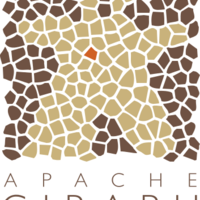Giraph: two years later
The new Giraph APIs for Python, Rexster and Gora.
- Track: Graph processing devroom
- Room: H.1308 (Rolin)
- Day: Sunday
- Start: 11:15
- End: 11:45

Since its initial incubation, Giraph has turned into a different beast. It is now a solid, full-featured tool used in production at many companies that need to analyse massive graphs. The success of a data analysis tool relies on the usability if its programming API and its ability to play well with the ecosystem of data stores.
In this last year, much has been done in this aspects, with a new programming API that allows composable jobs, and scripting support. You can now write Giraph applications that will run over billion of vertices with 20 lines of python code.
Moreover, Giraph is now able to read and write graphs from any Blueprints-compatible graph database. Furthermore, thanks to Gora, it can read and write data modelled as graphs from a large set of NoSQL (even SQL!) stores.
In this presentation, I will focus on these new contributions to Giraph, namely its python API and the rexster and gora input formats.
I will show samples or working code, and run a demo where I compute a graph computation expressed in python over a graph stored in a graph database.
Speakers
| Armando Miraglia |